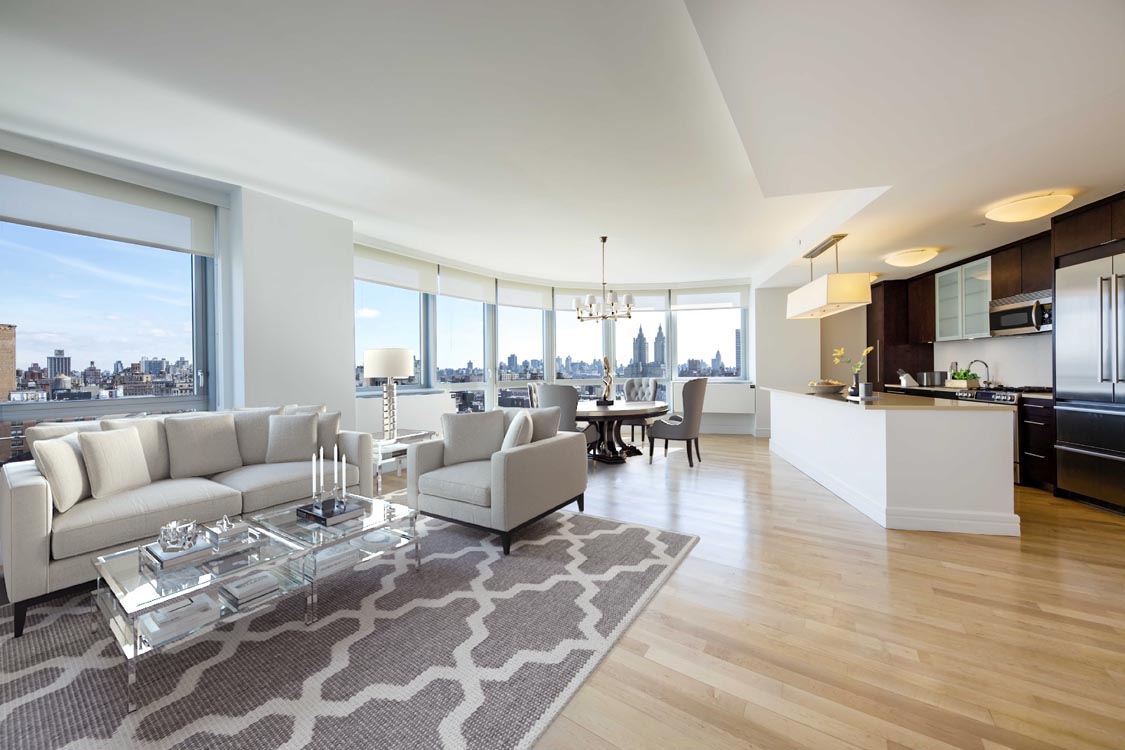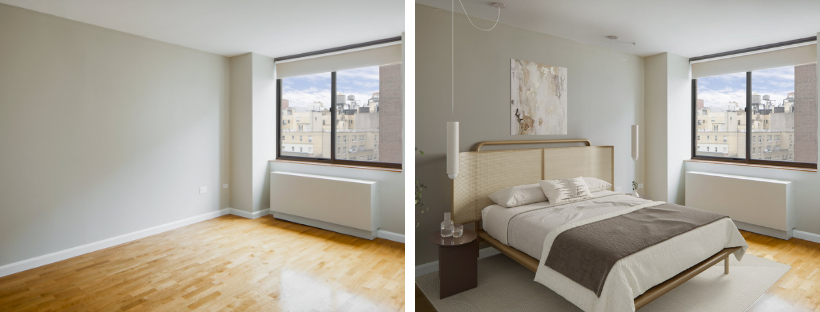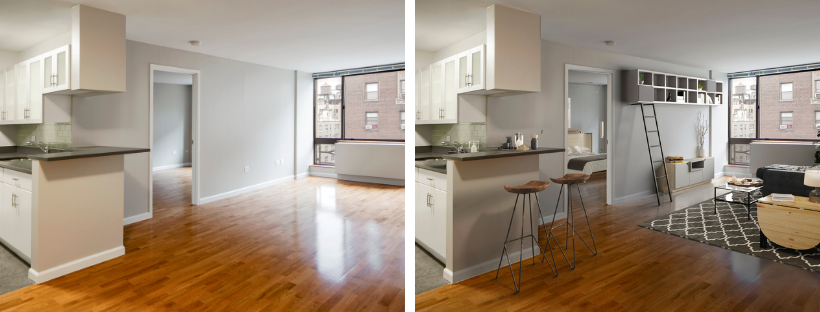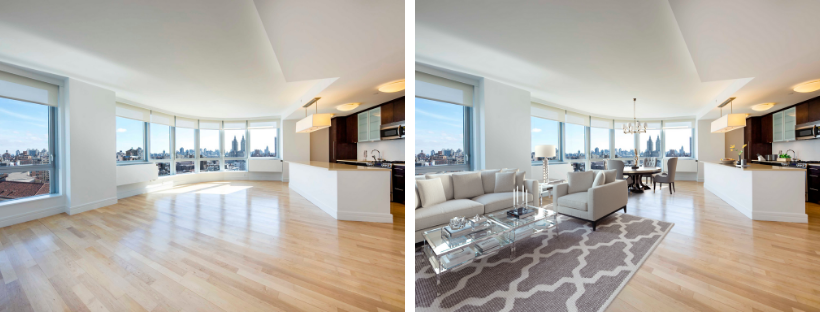Does Virtual Staging Work? Everything You Need to Know
Virtual staging may be gaining interest within the real estate industry, but this digital tool, for some reason, is still working hard to prove its...
4 min read
 Kyna Garrett
:
Jul 17, 2019 9:00:00 AM
Kyna Garrett
:
Jul 17, 2019 9:00:00 AM

Virtual staging is the shiny new marketing tool turning heads in real estate. After all, this 100% digital solution is a cost-effective alternative to actual home staging.
For large portfolios in multifamily, virtual staging has proven to change the game for marketing properties. Still, there are many misconceptions and myths about virtual staging in the industry. That's why we’ve compiled the latest virtual staging statistics that will help you rethink this alternative to traditional home staging.
Click here to check out our complete (un-gated) guide to virtual staging.
Based on our own calculations, traditional home staging can cost anywhere from $1,000 to $5,000 for a house. For high-end multifamily complexes, that number can soar to $30,000 for a single apartment model unit. Virtually-staged photographs, however, can cost anywhere from $100 to $300 per photo.
All of this includes the cost of consulting, working with an interior designer and high-end furniture rental (sometimes a pretty hefty monthly payment). If we consider that a luxury apartment may spend up to $30,000 for premium staging elements, that entire cost can be wiped with a few photos of the model unit for a one-time fee - reducing cost by almost 100%.
For a traditional staging fee of $5,000, our own services would reduce the cost by 82% with the investment of just three virtually-staged photos.
In a 2018 home survey about home staging, 68% of homes sold for 9% more money.
Considering that statistic and that virtual staging also saves money, the return on investment is much higher than traditional staging. Not to mention, Class B and Class C properties can stage with premium furniture that is 100% digital for a much lower cost, thus boosting rental rates.
Many homeowners and property managers shell out a whopping $300-$500 per consultation. Multifamily providers will spend a higher premium for more model units. For virtual staging, however, there is zero cost associated with consulting.
Even though you’ll pay no money up front, you will still work with 3D artists with interior design backgrounds in the early stages of the process. So you essentially get a quicker consult job for the same quality, but no cost up front.
One common misconception about virtual staging is that it can look fake or deceiving. As a matter of fact, the best virtual staging services utilize the latest technology that creates photorealistic images like the examples you see below.
Virtual staging should also never alter construction finishings, but instead just add decor and furniture to brighten and enhance the space.



According to the National Association of Realtors, 81% of buyers are able to better visualize a space as their next home when it is staged.
The problem? A lot of properties for sale or rent aren’t staged at all because of the high cost associated. Not to mention, there are plenty of properties out there on internet listing services with empty spaces.
Naturally, no one likes a cold and empty space. Beautifully-staged homes will help prospects see themselves in the space.
According to the Mortgage Report, staged photographs on listing websites receive more views and thus rent/sell 73% faster than unstaged competition.
And it’s not hard to see why: prospects enjoy seeing how their new home could look, rather than viewing an empty shell.
That number has only grown, especially for multifamily units. Majority of apartment hunters tend to be between 22 and 34 years old today, making this group the biggest advocate for moving cross-country without touring a site in person. Not convinced? That same year, 45% of millennial homebuyers made an offer on a home sight-unseen.
Despite the common pitfalls that renters, landlords and management companies fear come along with renting sight unseen, renters and homebuyers are still doing it.
For that reason, virtual staging has become much more feasible (and affordable) to target long-distance prospects during their search.
Yes, you read that correctly. But that’s only home staging. If we eliminate the need to physically stage a property and replace it with 100% digital furniture, the return only increases.
Considering that virtual staging has no upfront costs, it’s a one-time fee for a single photo, and it has a much smaller price point, landlords and sellers can expect a pretty impressive return.
Unlike traditional staging, virtual staging allows sellers or management companies the freedom to stage images however they want. Home staging requires an interior designer, who will often consult and take over the process of staging for the best appearance.
With virtual staging, 3D artists will design the space however the client wishes - clients may take 100% control or relinquish some creative freedom to the 3D artists and trust their best judgement on the design.
Lastly, and probably one of the most important statistics: property owners only have seven seconds to make a great first impression. Empty images won’t make as great of a first impression as staged images on listings.
For one, an empty space doesn’t really pull the prospect in, while a beautifully-decorated space is enticing and interesting to look at. Properties are more likely to intrigue prospects and increase inquiries if they take the small investment to virtually-stage their property.
With these facts and figures about virtual staging, it's not hard to see why so many real estate agents and apartments are turning to the technology.
As more and more businesses adopt virtual staging into their marketing plans, it's important to stay on trend and offer unique digital content to help your property stand out from the rest.
Contact us today to learn more about our virtual staging services to bring your space to life.
.jpg)
Virtual staging may be gaining interest within the real estate industry, but this digital tool, for some reason, is still working hard to prove its...
_final.jpg)
The real estate market once consisted of renters and buyers finding a clip in the newspaper and driving from property to property to decide where...

In the competitive world of multifamily real estate, making a lasting impression on potential residents is crucial. Visual appeal is a critical...